Reading of the Week
The main thing I read this week was The Sexual Subject, edited by Mandy Merck (I was meant to read it last week and forgot. oops). It's a collection of essays from the film magazine Screen on the topic of sex and gender. It naturally includes my best friend Laura Mulvey's Visual Pleasure and Narrative Cinema, as well as a bunch of other essays including one by my other bestie Richard Dyer! There was some interesting stuff in here but oh my god. I am so sick of Freud and Lacan. If I ever see the words "psychoanalytic theory" again I'm going to explode.
Notes from The Sexual Subject:
- DIAMOND RARE ASEXUALITY IN ACADEMIA W IN THE INTRODUCTION!!!! "The phrase 'sexual subject', with its emphasis on 'subject' rather than the already determined categories of 'female' and 'male' invites us [...] to adopt a flexible response to the question of sexual subjectivity. Is she a man? Is he a woman? A not-woman? Or a he-woman? An object? A subject? Bisexual? Homosexual? Asexual? Nothing?" (p.1) - this is perhaps just on the brain bc I've been rewatching BoJack Horseman but I find it interesting that they very obviously delineate betweeen 'asexual' and 'nothing'
- Some good contextual information in theIntroduction to the Psychoanalysis and Subjectivity chapter - "Laura Mulvey's 'Visual Pleasure and Narrative Cinema', first published in Screen in 1975, has probably generated more debate, both in the pages of Screen and elswehere, than any other single article in the history of contemporary film theory" (p.16)
- I found Difference by Stephen Heath mostly entirely fucking incomprehensible and frustratingly unclear in what it's even trying to argue for (AND WHY WAS IT 60 PAGES LONG) but there were some interesting points made. I liked the discussion of the construction of sexuality - "Sexuality is not given in nature but produced; the individual subject is not constructed from sexuality, sexuality is constructed in the history of the subject" (p.59)
- "Paradoxically perhaps at first view, this may well be one of the decisive aspects of the insistence on the extensiveness of women's sexuality: 'the woman has sexes all over'; 'is not the "adult" woman one who reconstructs her sexuality in a field which goes beyond sex?' Which is to say that in current ideological struggle it is not enough to assert in opposition women's relation to a non-genital, 'dispersed' sexu- (p.63) ality, since such an emphasis (moreover close to Freud, who can talk of a feminine sexuality 'dispersed over the body from head to foot') is a powerful representation of women from within, and as part of, the existing oppression, woman as a kind of total equivalent to sex, her identity is that; the need is precisely to come back on the production of sexuality, women and men (the reduction of sexuality to genitality in their representation), and to understand the history of the subject in difference from there, in the social relations of its symbolic order, in a possibility of transformation" - I think the point about women being seen as inherently sexual is salient but jesus christ why is this all one fucking sentence (p.64)
- "Female sexuality is censored rather than repressed, in as much as it 'lends itself less easily to a "losing itself" as the stake of unconscious representation'" (p.65) - I feel like there's an interesting connection to be made to Dyer's essay on male sexuality and how men's sexuality is seen as something separate from the man himself
- Mentions that according to scholars like Montrelay, "Feminine sexuality is 'unexplorable', a dark continent 'outside the circuit of the symbolic economy' which the woman's jouissance contains and exceeds as an end of language" (p.65)
- "Is it possible for a woman to take place in a film without representing a male desire?" - feels telling that this is even a question worth asking (p.85)
- Some vaguely useful points about audience reception: "The terms are weak on both sides: to hold that a given text is 'different for everybody' is as much the end of any consequent political analysis and practice as to hold that it is 'the same for everybody'; the implication of the latter is the possibility of a definitive analysis able to determine the use-value of a film in abstraction from the actual historical situations of its use; that of the former is a malleable transparency of the particular film to the determinations of the particular individual or audience, thus removing in the end any real basis for supporting through political-cultural analysis any film or films against any other or others" (p.92)
- "The reading of a film is neither constrained absolutely nor free absolutely but historical, that history including the determinations of the institution cinema, the conditions of the production of meanings, of specific terms of address in films, a film. The property of a film is not yours or mine, whether makers or spectators, nor its; it is in a number of instances of relations across the film's preconstruction, passage and construction that engage the spectator-subject in a multiplicity of levels of reading, reception, response" (p.93)
- "Every individual is the site of a singularity, the fact of his or her individual history. The social implication, the social formation, of all discursive systems, symbolic relations, in no way prevents the production and inscription of singular events - which events, which individual history, will be caught up in the reception of a film for any spectator" (p.94)
- "'Production not only creates an object for the subject, but also a subject for the object.' Everyone is the possibility of a difference in reading, reception, response (with that difference a plurality of differences across the 'one'), but the film is the same, a certain organization, a certain address; the film, that is, offers something of a common terrain on which meanings are made and remade, assumed and displaced in any concrete situation (p.94) of spectatorship" (p.95) - I like the idea of the text as a 'common terrain'
- Finally free from Stephen oh my fucking god. Anyway What's Wrong With 'Images of Women'? by Griselda Pollock made some pretty interesting points about how women are portrayed in visual art. (and also a lot of points that I think Mulvey already made better, but frankly I could make the same criticism of a lot of essays in this book)
- "It is a common misconception to see images as merely a reflection, good or bad, and compare 'bad' images of women (glossy magazines photographs, fashion advertisements etc.) to 'good' images of women ('realist' photographs, of women working, housewives, older women etc.). This conception represented by the title 'Images of Women' needs to be challenged and replaced by the notion of woman as a signifier in an ideological discourse in which one can identify the meanings that are attached to woman in different images and how the meanings are constructed in relation to other signifiers in that discourse. Thus rather than compare different kinds of images of women one needs to study the meanings signified by woman in images with reference, for instance, to man in images" (p.136) - I do like the discussion of going further than just dividing representations of women into 'good' and 'bad' and actually thinking about what they mean. I think the former is a very easy trap to fall into, and I want to avoid falling into it myself when it comes to depictions of a-spec identity
- Also an interesting section talking about the artistic practice some feminist artists used of recreating images of women with men instead, reversing the genders: "It is clear that a bearded man with a silly expression, woolly socks and moccasins does not suggest the same things as the sickly smile of the booted and black-stockinged woman, not simply because there is no comparable tradition of erotic imagery addressed to women but rather because of the particular signification of woman as body and as sexual. There is a basic asymmetry, inscribed into the language of visual representation which such reversals serve to expose" - again we come back to the idea that women are somehow seen as inherently sexual objects (p.143)
- My favourite thing about The Heterosexual Presumption by Claire Pajaczkowska is that it starts with the phrase "I am writing this article because of the anger I feel..." Incredible energy. No notes. (p.184)
- The rest of the essay I was less interested in, but I was intrigued by this part: "Laura Mulvey demonstrates how this is possible; her polemical use of an 'either punished or fetishized' schema for investigating the representation of women in the classic realist Hollywood text is crucial" - my interest in this is dampened by the fact that Claire decided to not. cite this quote??? Like I guess it's probably from Visual Pleasure but no fucking clue honestly (p.189)
- Film and the Masquerade by Mary Ann Doane made some interesting points, such as "the iconic system of representation is inherently deficient - it cannot disengage itself from the 'real', from the concrete; it lacks the gap necessary for generalizability" - so basically any representation of something can't be completely detached from the real thing (p.229)
- "My insistence upon the congruence between certain theories of the image and theories of femininity is an attempt to dissect the episteme which assigns to the woman a special place in cinematic representation while denying her access to that system" - Episteme!! Like in Foucault! (p.229)
- "It is precisely this opposition between proximity and distance, control of the image and its loss which locates the possibilities of spectatorship within the problematic of sexual difference. For the female spectator there is a certain over-presence of the image - she is the image. Given the closeness of this relationship, the female spectator's desire can be described only in terms of a kind of narcissism - the female look demands a becoming" (p.231) - wanted to make a note of this because I feel like it could connect to Smelik's essay on feminist film studies, which also discusses narcissism in relation to representations of women
- "The very fact that we can speak of a woman 'using' her sex or 'using' her body for particular gains is highly significant - it is not that a man cannot use his body in this way, but that he doesn't have to" - kind of interesting stuff (p.235)
- "The spectator's pleasure is thus produced through the framing/negation of the female gaze. The woman is there as the butt of a joke - a 'dirty joke' which, as Freud has demonstrated, is always constructed at the expense of a woman" (p.239) - not sure if that last part is true but hwhatever. it's an interesting though
- I also really enjoyed reading Desperately Seeking Difference by Jackie Stacey, which also discusses reception theories - "We could accept a theory of masculinization of the spectator at a textual level, but argue that spectators bring different subjectivitie to the film according to sexual difference, and therefore respond differently to the visual pleasures offered in the text" (p.245)
- I love that Stacey actually critiques the binary mode of thinking a lot of feminist film scholars at this time seem to engage in: "This is a very familiar problem in feminist theory: how to argue for a feminine specificity without falling into the trap of biological essentialism. If we do argue that women differ from men in their relation to visual constructions of femininity, then further questions are generated for feminist film theory: do all women have the same relationship to images of themselves? Is there only one feminine spectator position? How do we account for diversity, contradiction or resistance within this category of feminine spectatorship?" (p.247) - she really said nice dichotomy idiot what lies outside it
- She criticises other scholars' readings as relying on an "insistence upon a gendered dualism of sexual desire" that "maps homosexuality on to an assumed antithesis of masculinity and femininity. Such an assumption precludes a description of homosexual positionality" (p.249) - Firstly this raises the question of where this way of thinking leaves sexualities other than heterosexuality and homosexuality (and I think this is a relevant question because the idea of homosexuality being an "antithesis of masculinity and femininity" is influential beyond just this field of academia), secondly this reminds me of an interesting zine I saw about the writer and artist's perspective on gender as an aromantic person, which they explain in the zine was specifically inspired by a friend's zine about their relationship with gender as a lesbian
- "The limits of a dichotomy which offers only two significant categories for understanding the complex interplay of gender, sexual aim and object choice is clearly demonstrated here" (p.255)
- Finally we're on to my bestie Richard Dyer, and Don't Look Now, which begins with an interesting discussion of stereotypical gender roles in relationships in film: "We have all seen, countless times, that scene of Young Love, where, in the canteen, at school, in church, the Boyo and the Girl first see each other. The precise way it is done is very revealing. We have a close-up of him looking off camera, followed by one of her lookiong downwards (in a pose that has, from time immemorial, suggested maidenliness). Quite often, we move back and forth between these two close-ups, so that it is very definitely established that he looks at her and she is looked at" (p.265)
- Discusses the classic Muybridge photo sequences: "In a study of these sequences, Linda Williams shows how, even in so 'scientific' an undertaking and at such a comparatively 'primitive' stage in the development of photography, Muybridge established a difference between the female subjects, who are just there to be looked at, and the male subjects, who are doing something (carrying a boulder, sawing wood, playing baseball) which we can look in on" (p.270) - not super relevant to what I'm looking at but I found it interesting!
- "Like so much else about masculinity, images of men, founded on such multiple instabilities, are such a strain. Looked at but pretending not to be, still yet asserting movement, phallic but weedy - there is seldom anything easy about such imagery" - the "looked at but pretending not to be" feels like the best summary of Dyer's whole point (p.276)
- Masculinity as Spectacle by Steve Neale was a good source of context for the time, with its argument that at the time "Only within the Gay Movement have there appeared specific discussions of the representation of men. Most of these, as far as I am aware, have centred on the representations and stereotypes of gay men. Within both the Women's Movement and the Gay Movement there is an important sense in which the images and functions of heterosexual masculinity within mainstream cinema have been left undiscussed. Heterosexual masculinity has been identified as a structuring norm in relation to images both of women and gay men" - feels like this is a similar point to what Dyer said about male sexuality, heterosexual masculinity is so normalised that no one thinks about how it is also constructed, the same way that stereotypes of women or gay men are (p.277)
- A point that's interesting to no one except me: "Such instances of 'feminization' [of men] tend to occur in the musical, the only genre in which the male body has been unashamedly put on display in mainstream cinema in any consistent way" (p.286)
- The last essay in the collection I read was The Other Question by Honi K. Bhabha, which has some interesting discussion on how stereotypes work: "The sterotype, which is [colonial discourse's] major discursive strategy, is a form of knowledge and identification that vacillates between what is always 'in place', already known, and something that must be anxiously repeated...as if the essential duplicity or the bestial sexual licence of the African that needs no proof, can never really, in discourse, be proved" (p.312)
- Discussion of how stereotypes are created: "My reading of colonial discourse suggests that the point of intervention should shift from the identification of images as positive or negative, to an understanding of the processes of subjectification made possible (and plausible) through stereotypical discourse." (p.313)
- "I argue for the reading of the stereotype in terms of fetishism. The myth of historical origination - racial purity, cultural priority - produced in relation to the colonial stereotype functions to 'normalize' the multiple beliefs and split subjects that constitute colonial discourse as a consequence of its process of disavowal. The scene of fetishism functions similarly as, at once, a reactivation of the material of original fantasy - the anxiety of castration and sexual difference - as well as a normalization of that difference and disturbance in terms of the fetish object as the substitute for the mother's penis" - wish everything didn't come back to Freud but whatevar (p.320)
- "Fetishism, as the disavowal of difference, is that repetitious scene around the problem of castration" (p.320)
- "Fetishism is always a 'play' or vacillation between the archaic affirmation of wholeness/similarity - in Freud's terms: 'All men have penises'; in ours 'All men have the same skin/race/culture' - and the anxiety associated with lack and difference - again, for Freud 'Some do not have penises'; in ours 'Some do not have the same skin/race/culture'" (p.320)
- "The stereotype is not a simplification because it is a false representation of a given reality. It is a simplification because it is arrested, fixated form of representation that, in denying the play of a difference (which the negation through the Other permits), constitutes a problem for the representation of the subject in significations of psychic and social relations." (p.321)
- "For the stereotype impedes the circulation and articulation of the signifier of 'race' as anything other than its fixity as racism. We already know that blacks are licentious, Asiatics duplicitous..." (p.321)
- "As a form of splitting and multiple belief, the 'stereotype' requires, for its successful signification, a continual and repetitive chain of other stereotypes. The process by which the metaphoric 'masking' is inscribed on a lack which must then be concealed gives the stereotype both its fixity and its phantasmic quality - the same old stories of the Negro's animality, the Coolie's inscrutability or the stupidity of the Irish must be told (compulsively) again and afresh, and are differently gratifying and terrifying each time" - stereotype must always be re established (p.323)
- "The stereotype is at once a substitute and a shadow. By acceding to the wildest fantasies (in the popular sense of the colonizer, the stereotyped Other reveals something of the 'fantasy' (as desire, defence) of that position of mastery" (p.328)
- Quote from Fanon: "This behaviour [of the colonizer] betrays a determination to objectify, to confine, to imprison, to harden. Phrases such as 'I know them', 'that's the way they are', show this maximum objectification successfully achieved... There is on the one hand a culture in which qualities of dynamism, of growth, of depth can be recognised. As against this, [in colonial cultures] we find characteristics, curiosities, things, never a structure" (p.329)
Possible further reading:
- Orientalism by Edward Said
I've also been reading Minimizing Marriage by Elizabeth Brake. As a nice little treat for myself in between incomprehensible Screen essays.
Notes from the introduction to the book:
- "I learned from nursery rhymes and TV shows, young adult fiction and adult gossip, that the normal form of adult life was in married families and that a child's normal trajectory to adulthood would bring him or her, eventually, to this goal, which also happened to be where fairy stories conveniently ended. I gleaned, too, that unmarried female adults were somehow to be pitied in a way their male counterparts weren't and that there was an extra urgency for young women to marry, that it had a significance that went beyond 'happily ever after.'" (p.ix)
- "The privileging of marriage marginalizes the unpartnered and those in nontraditional relationships - quirkyalones, urban tribes, care networks, polyamorists - and same-sex partners, where they are prohibited from marriage. This privileging also brings special costs to women" - OBSESSED with the term 'quirkyalones' Elizabeth I'm kind of obsessed with you (p.x)
- Also lists "the asexual and the solitudinous" as those harmed by the privileging of marriage (p.1)
- Interesting point - "Many people who do not hold religious views or believe that marriage is the only permissible context for sex nevertheless associate marriage with a special moral status and with goods like stability, love, and trust" - so it's not just super right wing/conservative people arguing this(p.2)
- This is just a passing thought but her discussion in the introduction to the book of the argument that marriage is the only moral context for sex piqued my interest. Like I'm sure this will be gone into in more detail later and perhaps this exact point will be brought up but I feel like there's a connection here with how marital rape was seen as an impossibility and not worth criminalising for many years - idea that immoral sexual behaviour within marriage is impossible, which as Brake implies here is a pretty fucking stupid idea
- "The special priority accorded marriage and marriage-like relationships marginalizes other forms of caring relationships. To the (p.4) extent that it sustains 'amatonormativity' - the focus on marital and amorous love relationships as special sites of value - marriage undermines other forms of care" (p.5)
- LOL SPEAK OF THE DEVIL SHE IS NOW BRINGING UP BASICALLY MY EXACT POINT - "Marriage has significant legal ramifications, which make it a matter of justice. It entitles spouses to benefits, it constructs and protects spousal privacy, it limits exit options, and, in some jurisdictions, it brings exemptions from sexual battery charges. Its legal effects can be life-saving or fatal: entitlement to health insurance - or legal access rights for an abusive spouse." (p.5)
- Argues that "Liberal defenses of of same-sex marriage have not followed the implications of their own reasoning far enough. Attempts within liberalism to produce a rationale for restricting legal marriage to different-sex partners have failed, but so have attempts to produce a rationale for restricting it to monogamous or amatonormative relationships" - tieing it into LGBT rights issues (p.6)
- Interestingly Brake is clear that she doesn't believe marriage should be abolished (which is kinda what I thought she believed going in lol) but that marriage law needs to be heavily reformed
- OH YEAH ALSO WORTH NOTING THE BOOK IS V SPECIFIC TO AMERICAN MARRIAGE LAW
- "Lack of access to health care or a basic standard of living because one is excluded from marriage or chooses to boycott it is no light matter, nor is the inability (in certain jurisdictions) to press sexual battery charges against one's spouse. Marriage promotion in the United States, with its abstinence-until-marriage education, also impedes the developing sexual autonomy of young adults. Stigmatizing unmarried sex leads to ignorance and shame, conditions that lead to disease, abortion, and teenage pregnancy, and silence about sexual abuse and rape." (p.7)
- Mentions how all 50 US states adopted no-fault divorce in the 70s (p.11), which I'm mostly mentioning because it reminded me that the UK only introduced that in 2022. Guys genuine question what is actually wrong with our country.
- OOO IMPORTANT NUANCE POINT: "Toni Morisson writes of 'the different history of black women in this country - a history in which marriage was discouraged, impossible, or illegal; in which birthing children was required, but 'having' them, being responsible for them - being, in other words, their parent - was as out of the question as freedom" (p.11, quoting Morisson, Beloved, p.xvi-xvii) - so y'know. very different expectations than for white women of the time
- "Ironically, in light of the sexism, racism, and heterosexism of marriage law, there is a long, and continuing, legal tradition of associating marriage with morality" (p.13)
- "In light of such critiques, suspicion arises that the belief in the moral value of marriage is merely ideological, a tool of patriarchal capitalism" (p.20)
London Trip
The main event of the week was the trip to London on Friday! It was a packed day - we visited the Rebel: 30 Years of London Fashion exhibition at the Design Museum, the New Contemporaries exhibition at the Camden Arts Centre, the Freud Museum, and the Loudest Whispers exhibition at St Pancras Hospital Gallery where Willem was exhibiting.
It was a really interesting day - I loved seeing the fashion exhibition at the Design Museum (which was also just a really well-designed exhibit - loved the lineup of mannequins as if they were going into a club) and all the interesting art pieces at Camden Arts Centre!
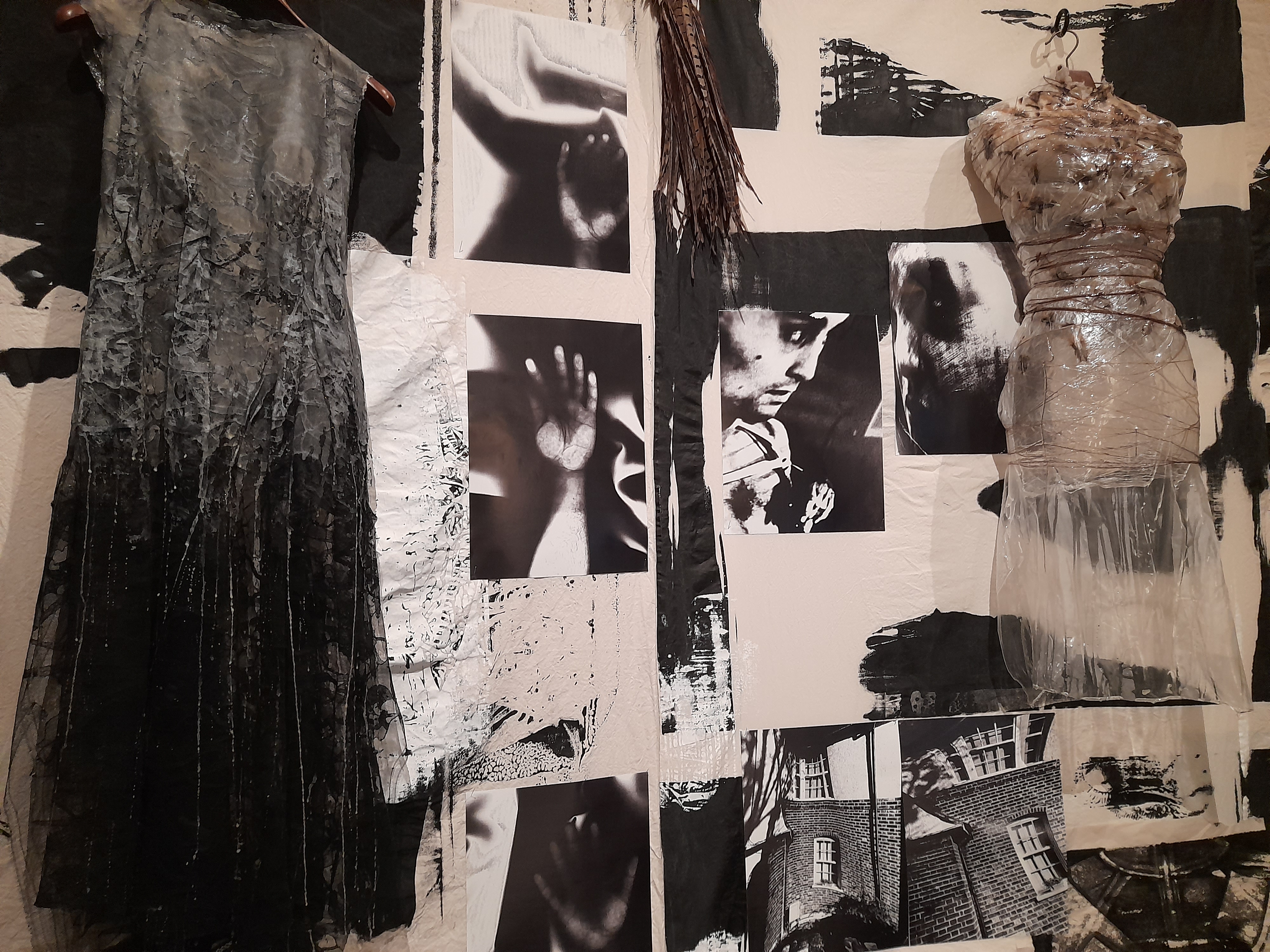


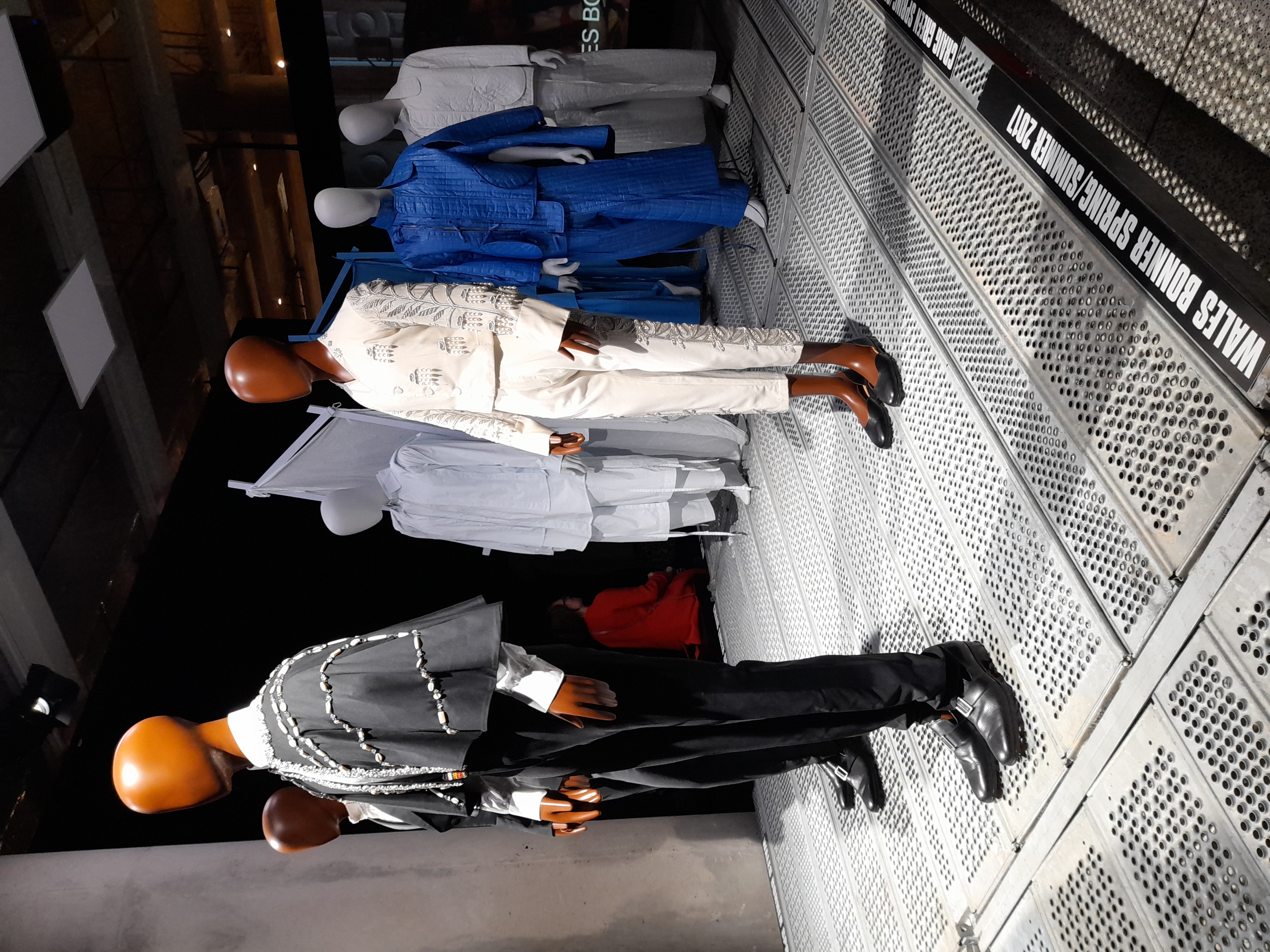
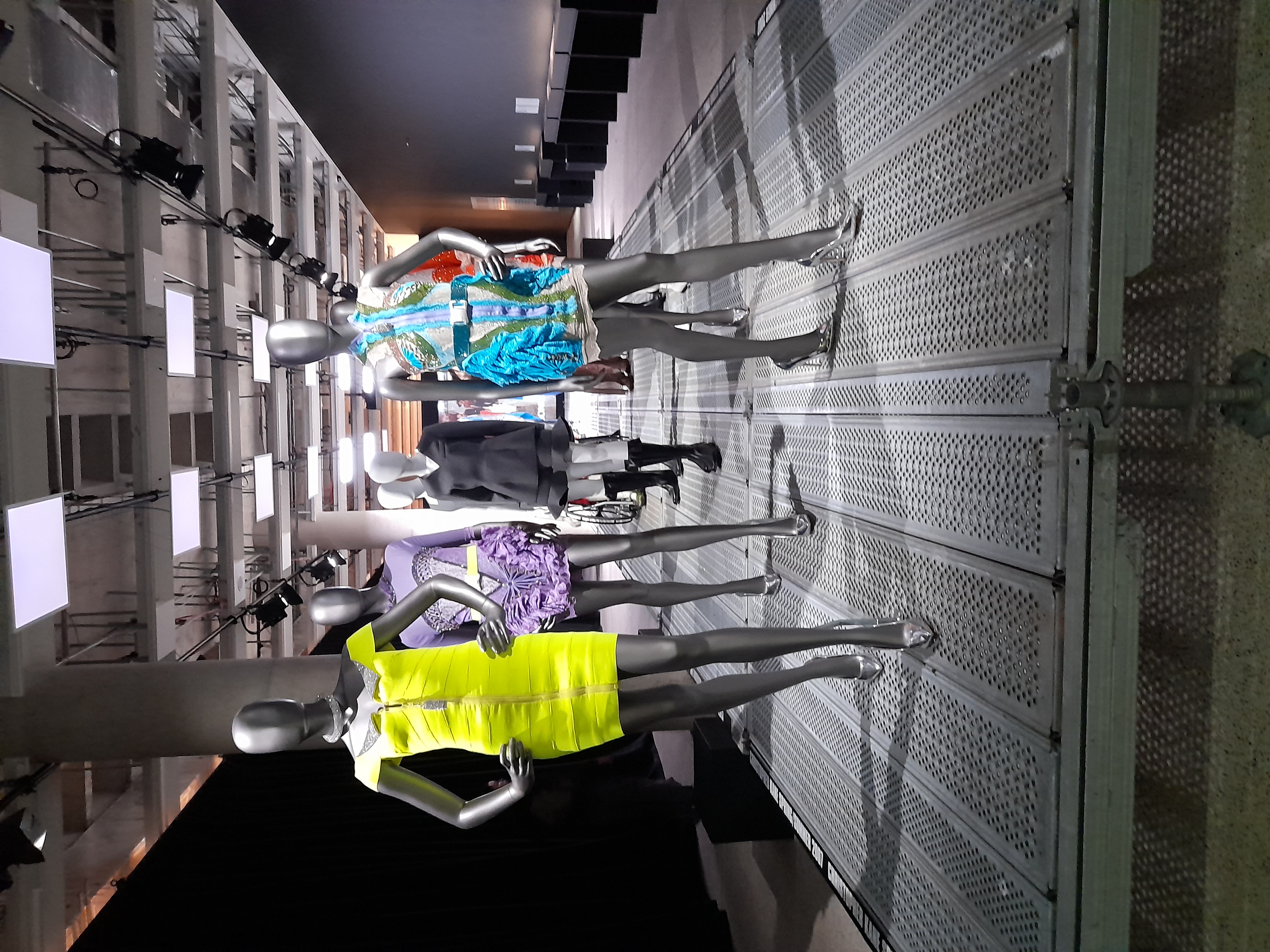
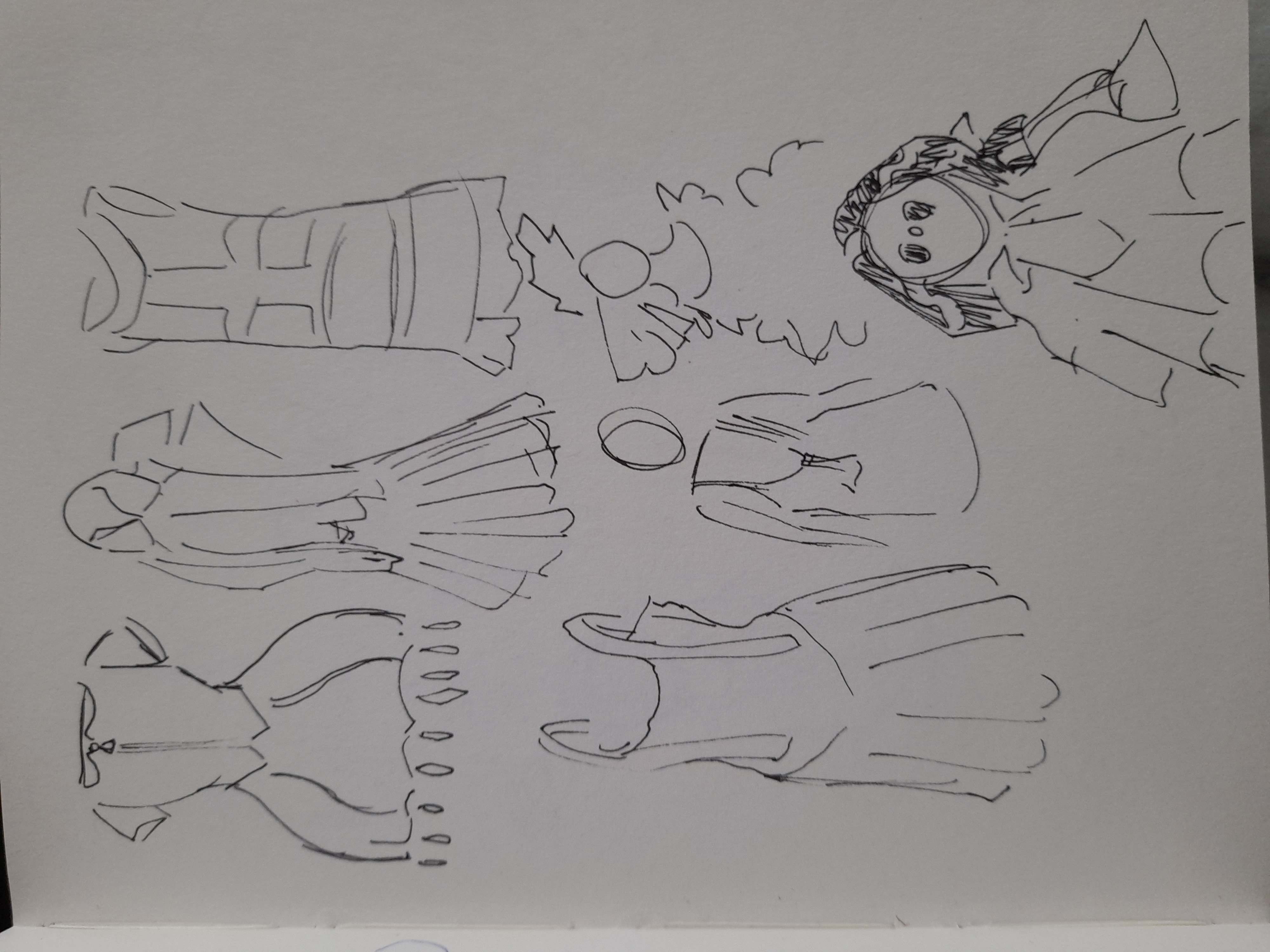



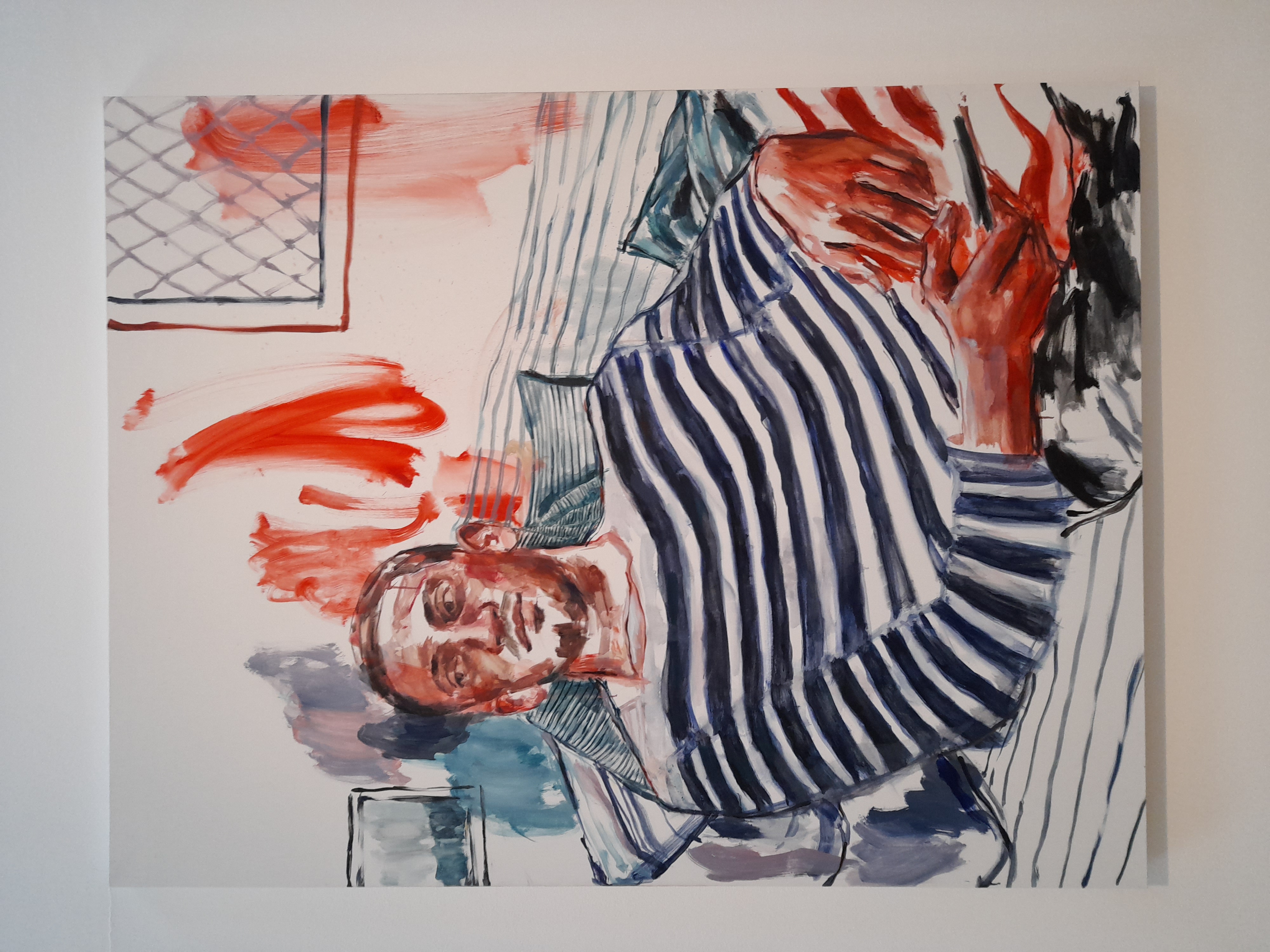


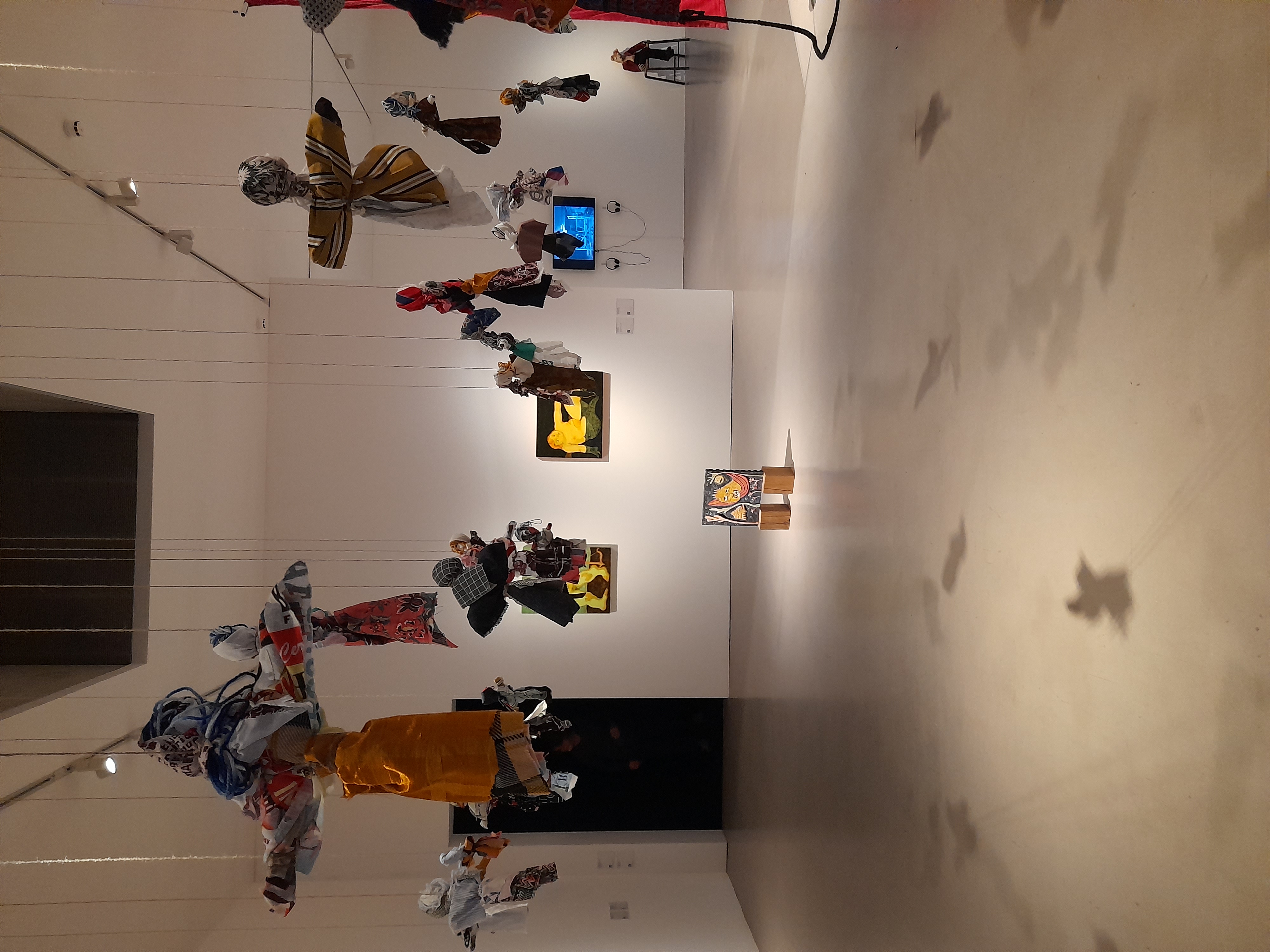
However, the Freud Museum and the Loudest Whispers exhibit were definitely the most relevant to my research! As mentioned, I've been reading a lot of 70s film feminist theory, and Freud's psychoanalytic theory is very important to a lot of this writing. So it was really cool to learn more about the man himself and how his ideas developed. The highlights for me were learning about Salvador Dali being a huge fan of Freud (and Freud not caring at all), the story about Freud interpreting a woman's dreams to find out she had a child she didn't want (which. he probably could have figured out from her story about punching her own womb while pregnant to try and kill the unborn child, but who am I to question Freud's methods), and getting to lay on Freud's famous couch! Oh, and writing a letter to Freud asking what he thinks of Laura Mulvey.

The Loudest Whispers exhibition was also really cool - there was even an art piece there about being trans and asexual! Me and Miles also talked to Willem about the possibility of us helping out with next year's exhibition, which would be really exciting!
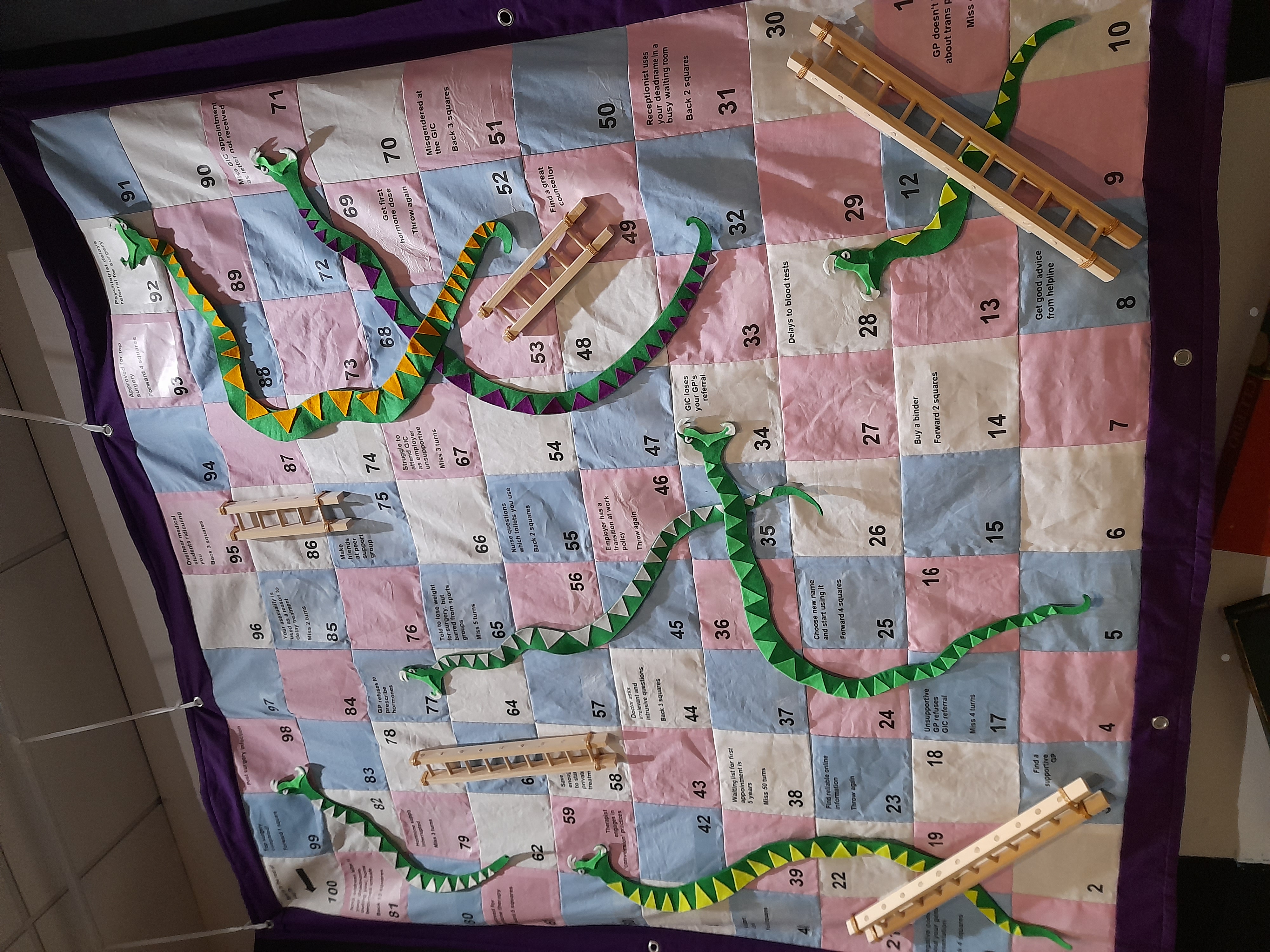
On the hunt for more asexual characters
I've been continuing my research into portrayals of asexuality/aromanticism by rewatching seasons three through six of BoJack Horseman - an animated comedy set in a world of humans and anthropomorphic animals, that follows the lives of washed-up sitcom star BoJack and his friends. This show got a lot of attention for making one of its main characters, Todd, asexual. In 2016 it was considered very groundbreaking - while there had been some portrayals of asexuality before in TV, BoJack Horseman was perhaps the most popular and mainstream show by that point. It also got a lot of praise for how it didn't just portray one asexual character, but portrayed the wider ace community. Transcripts of the show here
Full disclosure, leaving the asexuality stuff aside for a second, this is one of my favourite TV shows ever, second only in my mind to Buffy the Vampire Slayer. I just think it's incredibly well-written and well-made and well-acted and creative and funny and interesting. Getting to rewatch it for this project has been a treat, even if it has also been mildly emotionally devastating.
I also think BJH remains to this day one of the best portrayals of asexuality in a TV show, mainly because Todd is actually a main characters and gets to be a fully developed character and have storylines outside of just being asexual. Unlike some other shows like Sex Education, it doesn't feel like he's just there to educate the audience about asexuality, although there is an element of this. On the other hand, there's also a lot of attention to his journey of discovering he's asexual, meeting other ace people, and becoming more comfortable in his identity. So I think the show strikes a good balance. So far I've rewatched season 3, which is the first season to deal with asexuality and shows Todd's discomfort with sex and how it affects his relationship with old girlfriend Emily. I've also rewatched the first half of season 4, which is the season that has Todd explicitly naming himself as asexual and meeting other asexual people.
Aside from BoJack, I've also been learning more about some other shows that I didn't even realise portrayed asexuality. I've started listening to The Ace Couple podcast, a podcast by two ace people that often has episodes reviewing TV shows that portray asexual characters. They did two episodes discussing the adult animated comedy Big Mouth, which had an asexual character in its seventh season. If I'm being honest, I'd really like to not watch this show, but maybe if I have enough time I'll end up checking it out. The podcast people mostly seemed fairly unimpressed, but I guess this year is a wonderful time to experiment with forming my own opinions.
Previous week
Next week
Back to weekly journal
Back to home














